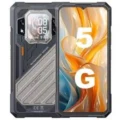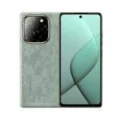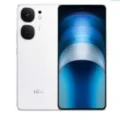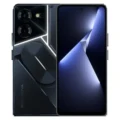Realme GT5 240W


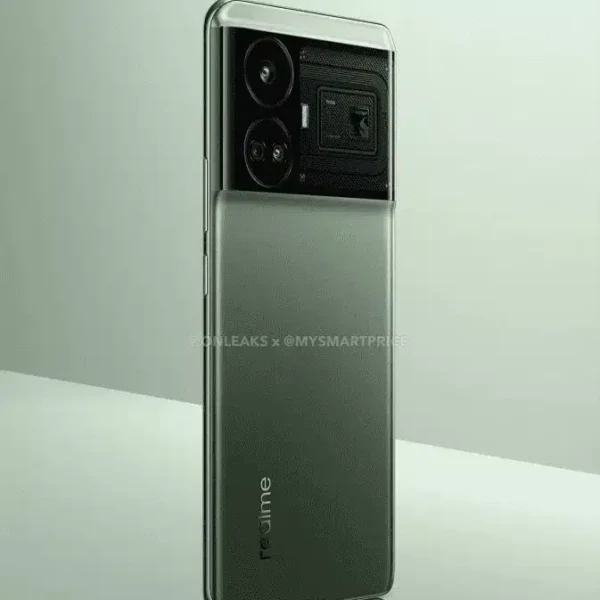
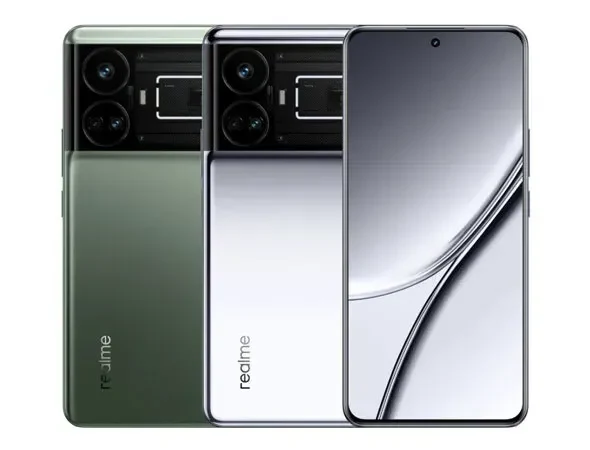



- : 24GB RAM Snapdragon 8 Gen 2
- : 6.74" 1240x2772 pixels
- : 4600mAh 240W
- : 50MP 2160p
Immerse yourself in a visual feast with the Realme GT5 240W’s vibrant 6.74-inch AMOLED display. Which boasts a crystal-clear resolution of 1240 x 2772 pixels and a butter-smooth 144Hz refresh rate.
Powerhouse Performance with Qualcomm Snapdragon 8 Gen 2:
Equipped with the advanced Qualcomm Snapdragon 8 Gen 2 chipset, the Realme GT5 240W delivers Supreme speed and responsiveness. Furthermore, With a whopping 1TB of internal storage and a lightning-fast 24GB of RAM, experience seamless multitasking and ample space for all your files.
Connectivity Redefined: 5G, 4G, and Wi-Fi 6:
Stay connected at all times with the Realme GT5 240W, supporting 5G, 4G, and Wi-Fi 6 connectivity. Whether you’re streaming, gaming, or Searching, enjoy lightning-fast speeds and a reliable connection.
240W Fast Charging: Never Miss a Beat:
Say goodbye to long charging times. Because the Realme GT5 240W boasts a 4600mAh battery with 240W fast charging capabilities. Which ensures you spend more time using your phone and less time waiting.
Capture Every Detail with Advanced Cameras:
Unleash your photography skills with a versatile camera setup. The Realme GT5 240W features a 50-megapixel primary sensor, an 8-megapixel ultrawide sensor, and also a 2-megapixel macro sensor. The front-facing 16-megapixel wide-angle lens ensures stunning selfies every time.
Sleek Design in Starry Oasis:
Make a style statement with the GT5 240W, available in the elegant Starry Oasis color option. So its sleek design and premium finish elevate your smartphone experience.
Seamless Security with Realme UI 4.0: Experience the latest Android 13 operating system paired with Realme UI 4.0. The GT5 240W also ensures a smooth user interface and quick access with a side-mounted fingerprint sensor.
Hence Upgrade to the Realme GT5 240W and elevate your smartphone experience with unmatched performance, stunning visuals, and cutting-edge features.
So if you want to explore more, visit the official website of Realme https://www.realme.com/
For more brand-new smartphones from other brands, visit our page https://gadgetsfocus.com/mobiles_smartphones_phones_android_ios/
Specs
Network
| 2G Network GSM 850 / 900 / 1800 / 1900 - SIM 1 & SIM 2 (dual-SIM) CDMA 800 / 1900 |
GSM 850 / 900 / 1800 / 1900 - SIM 1 & SIM 2 CDMA 800 |
| 3G Network |
HSDPA 850 / 900 / 2100 CDMA2000 1xEV-DO |
| 4G Network |
1, 3, 5, 7, 8, 28, 34, 38, 39, 40, 41 |
| 5G Network |
1, 3, 5, 8, 28, 41, 77, 78 SA/NSA |
| Speed |
HSPA, LTE-A, 5G |
LAUNCH
| Announced | August, 2025 |
| Status |
Available. Released 2023, September 04 |
BODY
| Dimensions | 163.1 x 75.4 x 8.9 mm (6.42 x 2.97 x 0.35 in) |
| Weight | 205 g (7.23 oz) |
| Build | Glass front, aluminum frame, glass back |
| SIMs SIM (Subscriber Identity Module) is a small card that contains mobile network subscriber's account information. This allows the phone using the card to attach to a mobile network. The SIM card is most commonly associated with GSM and UMTS mobile networks. Moving a SIM card from one phone to another allows a subscriber to switch mobile phones without having to contact their mobile network carrier. SIM cards can also be used by a phone to store limited amounts of data, such as phone numbers and text messages. |
Dual SIM (Nano-SIM, dual stand-by) |
Display
| Display Type Display Technology => A number of display technologies and types used in mobile phones => TFT (Thin Film Transistor), IPS (In-Place Switching), OLED (Organic Light Emitting Diode), AMOLED (Active-Matrix Organic Light-Emitting Diode), Super AMOLED (an even advanced version of AMOLED), Resistive Touchscreen (Resistive touchscreens contain two layer of conductive material with a very small gap between them which acts as a resistance), Capacitive Touchsceen (Capacitive touchscreen technology consists of a layer of glass coated with a transparent conductor) | AMOLED, 1B colors, 144Hz, HDR10+, 1400 nits (peak) |
| Size | 6.74 inches, 109.2 cm2 (~88.8% screen-to-body ratio) |
| Resolution | 1240 x 2772 pixels, 20:9 ratio (~451 ppi density) |
PLATFORM
| Operating System OS => Every computer system run on a base software called Operating System (OS). Operating System controls all basic operations of the computer (such as smartphone, PDAs, tablet computers and other handheld devices). The Operating System allows the user to install and run third party applications (apps), apps are used to add new functionality to the device. | Android 13, Realme UI 4.0 |
| Chipset Chipset is a group of integrated circuits designed to perform one or a more dedicated functions, often with real time computing constraints, Popular smartphones are equipped with more advanced embedded chipsets that can do many different tasks depending on their programming. | Qualcomm SM8550-AB Snapdragon 8 Gen 2 (4 nm) |
| CPU CPU (Central Processing Unit) mostly known as processors, CPU processes instructions in order to carry out certain functions that make your device operate properly. Processors are often described as the brain of computers, smartphones and tablets, Smartphones and tablets rely on processors to carry out their every task, Processors are an incredibly important factor in selecting any type of computing device, including your smartphone. | Octa-core (1x3.2 GHz Cortex-X3 & 2x2.8 GHz Cortex-A715 & 2x2.8 GHz Cortex-A710 & 3x2.0 GHz Cortex-A510) |
| GPU GPU (Graphics Processing Unit) is a single-chip processor designed to rapidly manipulate and alter memory to accelerate the creation of images in a frame buffer intended for output to a display, This includes things such as lighting effects, object transformations, and 3D motion. | Adreno 740 |
MEMORY
| Card Slot Memory Card Slot is a special slot for inserting a memory card. Memory cards allow you to expand the phone's built-in memory, A memory card (sometimes called a flash memory card or a storage card) is a small storage medium used to store data such as text, pictures, audio, and video, for use on small, portable or remote computing devices such as mobile phones, mp3 players, digital cameras. | No |
| Internal | 1TB 24GB RAM UFS 4.0 |
MAIN CAMERA
| Cameras Specs Today’s smartphones come equipped with a very comprehensive set of camera related specifications. Our smartphone, for many of us, has become our primary camera due to it being the one we always have with us. |
50 MP, f/1.9, 24mm (wide), 1/1.56", 1.0µm, PDAF, OIS 8 MP, f/2.2, 16mm, 112˚ (ultrawide), 1/4.0", 1.12µm 2 MP, f/2.4 (macro) |
| Video | 4K@30/60fps, 1080p@30/60fps, gyro-EIS |
| Camera Features |
Dual-LED dual-tone flash, HDR, panorama |
SELFIE CAMERA
| Cameras Specs Today’s smartphones come equipped with a very comprehensive set of camera related specifications. Our smartphone, for many of us, has become our primary camera due to it being the one we always have with us. |
16 MP, f/2.5, 25mm (wide), 1/3.09", 1.0µm |
| Features |
HDR, panorama |
| Video | 1080p@30fps, gyro-EIS |
SOUND
| Loudspeaker | Yes, with stereo speakers |
| 3.5mm jack |
No 24-bit/192kHz Hi-Res audio |
COMMS
| WLAN |
Wi-Fi 802.11 a/b/g/n/ac/6/7, tri-band, Wi-Fi Direct |
| Positioning |
GPS (L1+L2+L5), GLONASS, BDS, GALILEO, QZSS |
| Bluetooth Bluetooth is a wireless communications technology for exchanging data between mobile phones, headsets, computers and other network devices over short distances without wires, Bluetooth technology was primarily designed to support simple wireless networking of personal consumer devices. | 5.3, A2DP, LE, aptX HD |
| Infrared Infrared connectivity is an old wireless technology used to connect two electronic devices. It uses a beam of infrared light to transmit information and so requires direct line of sight and operates only at close range. | |
| USB | USB Type-C 2.0 |
| NFC NFC (Near field communication) is a set of standards for smartphones and similar devices to establish peer-to-peer radio communications with each other by touching them together or bringing them into proximity, usually no more than a few inches. | |
| Radio |
Features
| Sensors Sensors are electronic components that detects and responds to some type of input from the physical environment. The specific input could be light, heat, motion, moisture, pressure and location, The output is generally a signal that is converted to use in computing systems, a location sensor, such as a GPS receiver is able to detect current location of your electronic device. |
Fingerprint (under display, optical), accelerometer, gyro, proximity, compass |
BATTERY
| Battery Type Battery Type => Cell phones run on various kinds of batteries depending on the manufacturer, phone size or shape and features. There are basically four types of cell phone batteries => Lithium Polymer, Lithium Ion, Nickel Metal Hydride and Nickel Cadmium. | Li-Ion (Lithium Ion) |
| Capacity Battery Capacity is a measure (typically in Amp-hr) of the charge stored by the battery, and is determined by the mass of active material contained in the battery. The battery capacity represents the maximum amount of energy that can be extracted from the battery under certain conditions. | 4600 mAh |
| Placement | non-removable |
| Charging The functionality responsible for recharging batteries in portable devices, such as mobile phones, significantly influences both battery lifespan and the practicality of daily product usage.The charging process, encompassing factors like voltage, current, and completion actions, is contingent upon the battery's size and type.Contemporary battery chargers dynamically adjust charging parameters based on the battery's current charging state. Charging an empty battery poses no safety risk, allowing for a quicker charging process. Consequently, many charging speed benchmarks, including ours, specify the battery level achieved after a 30-minute session on an empty battery.Standard chargers with a power output of 5V/1A, equivalent to 5W, serve as a baseline, with anything surpassing this speed classified as quick or fast charging. | 240W wired, PD, 20% in 80 sec (advertised) |
MISC
| Colors |
Flowing Silver, Starry Oasis |
| Price |
About 470 EUR |
TESTS
| Display | Contrast ratio: Infinite (nominal) |
| Loudspeaker | -25.7 LUFS (Very good) |
| Battery (old) | Endurance rating 108h |
Reviews
Disclaimer Note
We strive to maintain accurate and up-to-date content on our website for general information purposes only. Please refrain from using the material for business, legal, or any other decisions.






